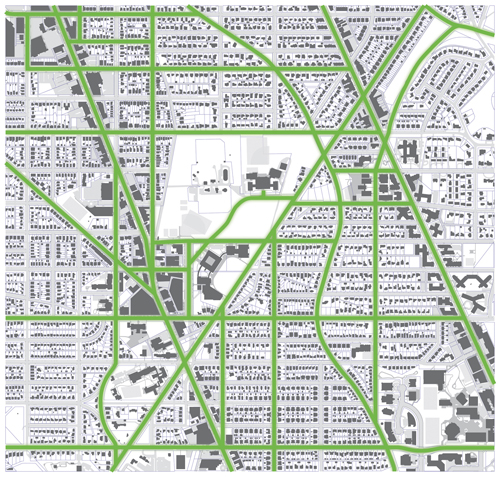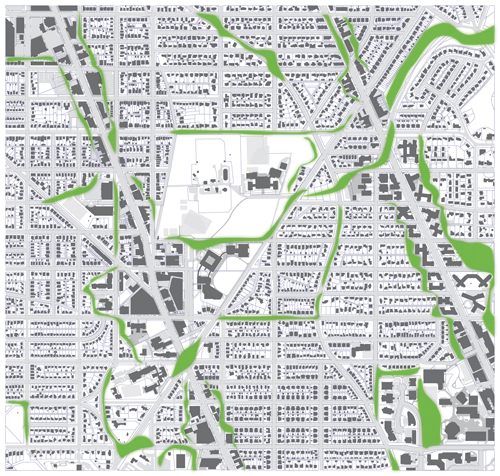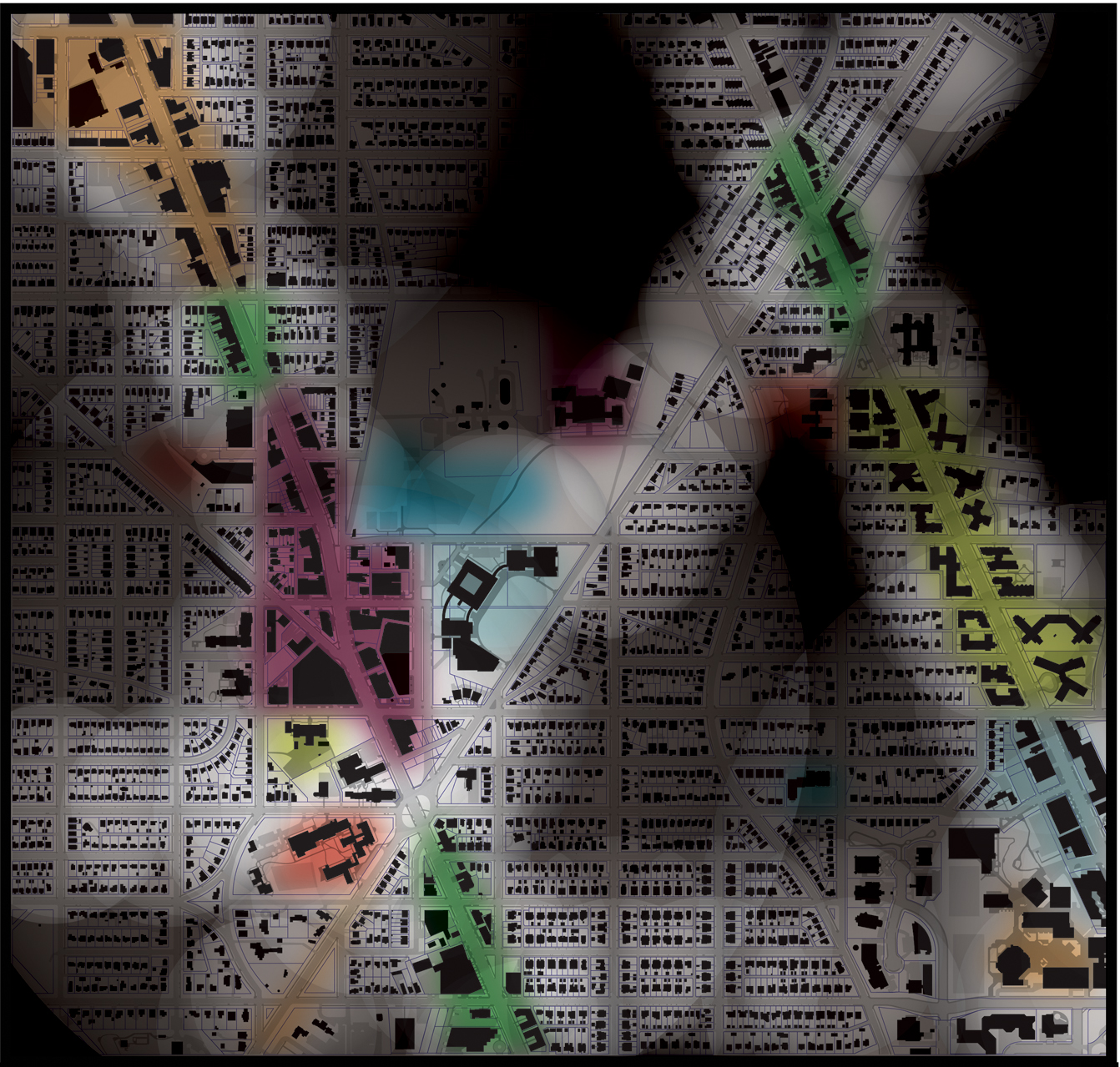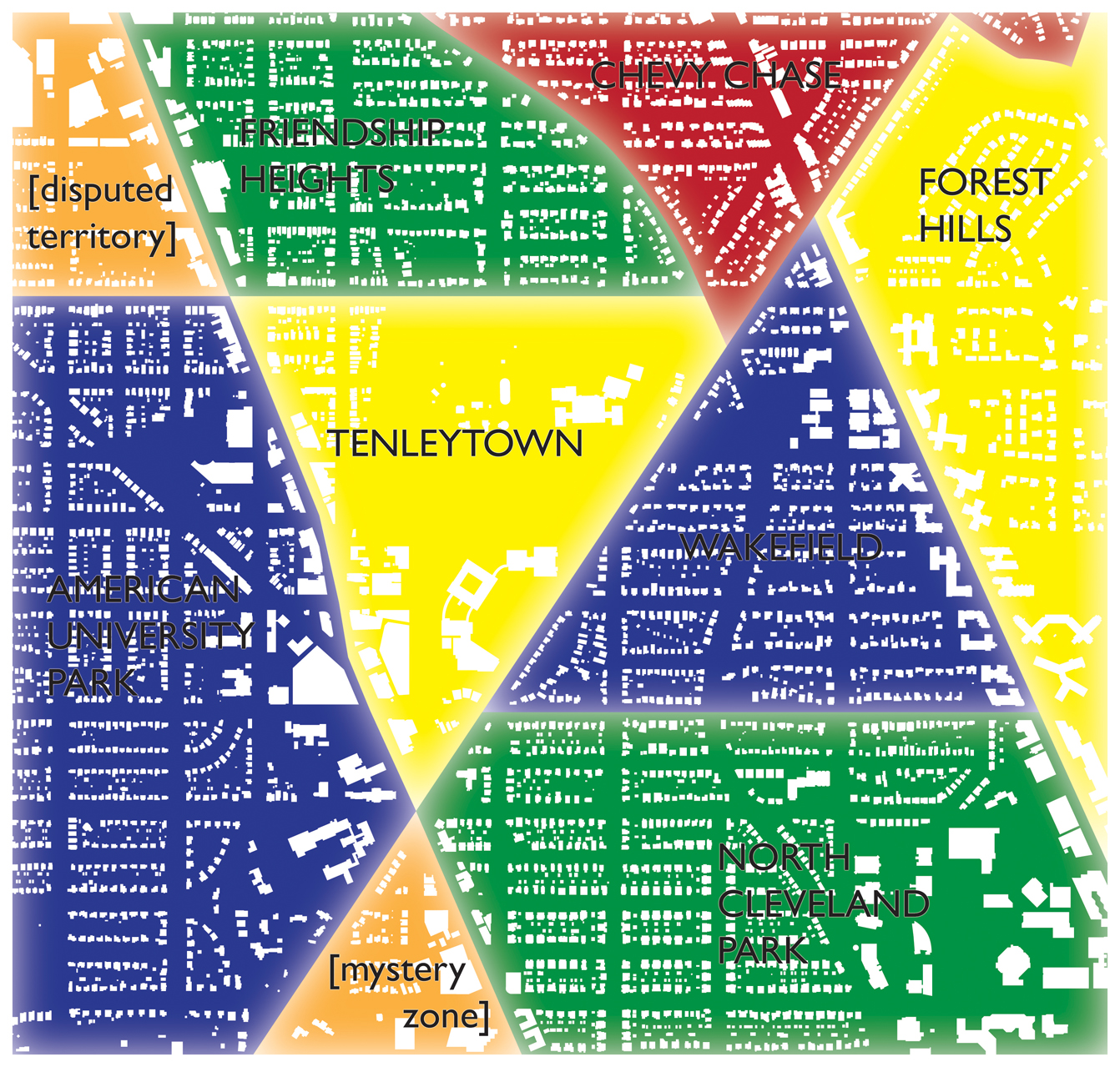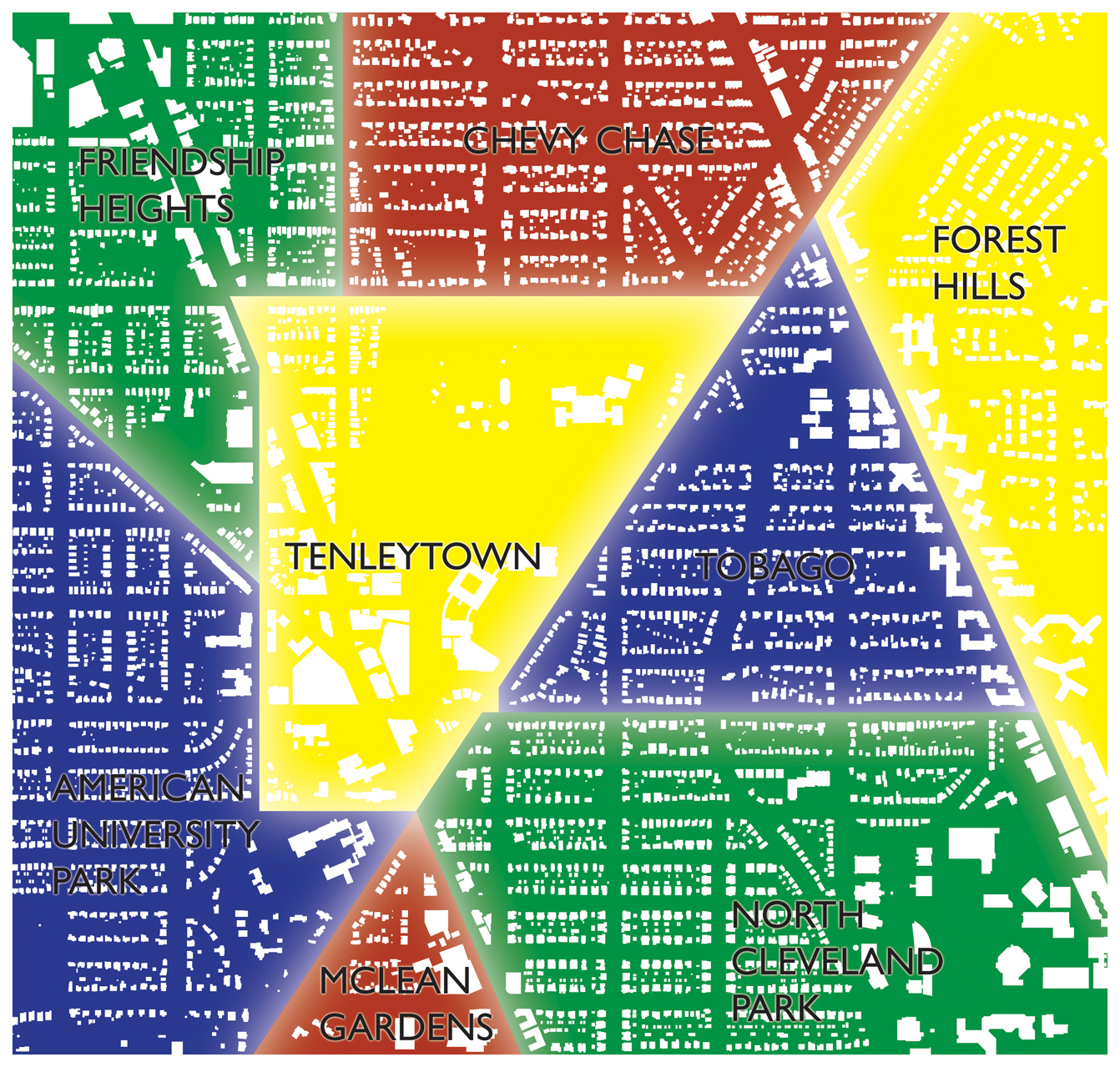When he wrote the book, Lynch interviewed a wide array of urbanites to understand how laymen organized, remembered, and navigated their neighborhoods and the city at large. He found that most individuals organized their cities with five archetypal patterns: paths, edges, nodes, districts, and landmarks. One caveat of this induction is that for each person, the definitions vary. The perception of paths depends on a destination and the familiarity with the neighborhood. On the other hand, the designation of edges and districts tends to be more consistent among locals. So, unlike my neighborhood maps, I drew more on personal experience, while also searching for objective measurements.
For example, the paths map (below) is based on the map of locality. The route to a front door might be unique, but there’s an appreciable amount of travel along certain major roads. So, I picked out the bigger paths. I’m willing to bed that most people would see these as frequent routes. Note that this does account for vehicle travel.
The second element is the edge. Edges form in gaps and hard shifts between building types. Parks and hills constitute much many of the edges unrelated to zoning. These breaks are some of the more prominent physical characteristics in a city, and I believe they encourage neighborhood division like nothing else.
OK, keep going, there are three more elements…
